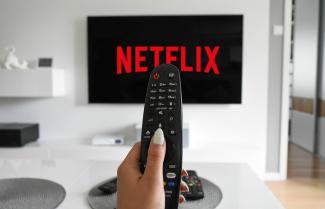
(Ex)Stream Pain: The Hidden Costs of Cutting the Cord
Like many Americans who have grown tired of seeing their cable bill go up and up and up, I was intrigued by the prospect of “cutting the cord” or reducing my cable service to Internet only. I have read many (what I now recognize as superficial) articles on the subject, so I finally decided to take the plunge last year.
The TV market these days is incredibly diverse and changing rapidly, so there were plenty of options for me to choose from. Although there are streaming packages that offer somewhat comprehensive channel listings (more on that later), I wanted to take full advantage of over-the-air (OTA) signals that broadcast in high-def and are readily available for free in most markets. You can assess TV signal strength in your area by searching on this Federal Communications Commission site: https://www.fcc.gov/media/engineering/dtvmaps
I have a long-standing relationship with a dependable TV and Internet installer, so I arranged to have an outdoor antenna installed. There are many options available here too, but I ended up buying the Antop Omni-directional antenna from Amazon that was recommended by my installer. We fiddled with various locations on the house and, despite living in the “boonies,” we ended up with over 50 strong channel signals. I called Cox Cable and (politely) told them to shove it.
It started out promisingly enough. In my old cable package, I had robust Internet service, a bunch of channels I rarely watched, a sports channel add-on, and a never-used “landline*” phone. Dropping everything but the Internet reduced my bill by $147 a month with little to no resistance from the customer service rep. If you had seen my reaction, you would have thought I had won the lottery!
Then reality began to set in. It took another three phone calls to Cox to ensure that I was only going to pay the rate I was quoted during the first call. For streaming content, I knew there were certain “must haves” in my new service, including the History Channel, PBS, and Celtics games (broadcast locally on NBC Sports Boston). Finding out which services offered what I wanted took a lot of trial and error, as Internet searches often fail to provide reliable answers. Paramount (NBC’s streaming service) does not include NBC Sports Boston (wait, what?!). The Hulu/Disney/ESPN bundle includes the History Channel, but all the episodes are at least two years old. And no PBS. If you want current episodes from the History Channel, you must upgrade to Hulu Plus Live TV for another $63/month. I ran Hulu + Live TV parallel with YouTube TV during a free trial just to compare the two. YouTube TV includes PBS, NBC Sports Boston and offers a user-friendly interface but no History Channel or original content, so not worth the $85/month they are charging for 4K content in my view.
From a technological perspective, the cable vs. streaming swap is not an even trade either. Celtics games streamed through the NBC Sports Boston channel on Hulu often freeze up, requiring frequent reboots. Trying to find what live TV is currently available on Hulu involves sorting through a bunch of large icons rather than an uncomplicated guide listing. And most importantly (at least to some), there is a substantial lag between OTA broadcasts and streamed content. I watched the Super Bowl on my local Fox station OTA but was switching back and forth to Hulu to compare the two. In four separate tries, the Hulu live stream was more than 4 minutes behind the OTA broadcast, a real spoiler alert hazard to those who are active with friends or social media during sporting events. And “ad-free” Hulu? Well, not really ad-free for a lot of shows.
You can still try various streaming services with minor risk or penalty for cancellation, so if you are someone who loves bargain and content hunting, you can have a field day. In the end, however, I did not like the disjointed nature of the service I was getting and went back to cable (insert eye roll here). Lesson learned!
*I have historically kept an old school landline to serve as an alternative technology back-up to cable and cell phones. However, since all landline phones are now VOIP (that is, delivered through the same cable that provides TV and Internet service), there is nothing to be gained from maintaining a separate phone. In the past, the cable companies have offered fierce resistance to the idea of dropping this service, likely because they were able to take the Vig on the taxes collected for the government!
